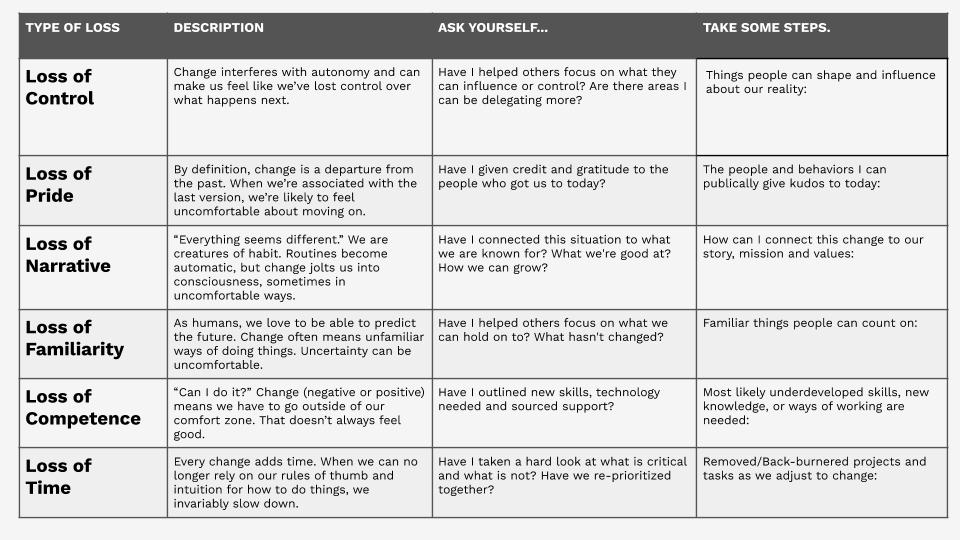
As leaders, if your organization is facing a sizeable, punctuated change, like a rebrand or an office move, gather your fellow leaders together and try this Acceptance Planning activity to help identify and overcome resistance in your teams.
Acceptance Planning
-
Break into groups. Divide the team: different groups can fill out the worksheet in its entirety, or, alternatively, each can fill out the sheet for different stakeholders. Note that if you do go this route, you may find that not all the reasons apply to any given stakeholder; or, you may realize a need to prioritize those reasons.
-
Ask the groups to consider the root causes. The first step to overcoming resistance to change is to evaluate the concerns or fears behind it. We’ve identified six common reasons on the worksheet, such as concerns of competence: if there’s a possibility that people will be incompetent at their new role, it may put their livelihood in jeopardy. And needless to say, people who are worried about losing their jobs will fight to undermine whatever changes you have planned.
-
Think about the context of change and make a plan. Too often, leaders leap into action because they understand the urgency behind the change, but they don’t pause to provide their team with enough context. For instance, if people are concerned about their competence levels, you may not have explained what skills will be needed, and more importantly, what support the organization will provide to help them level up. Break down, concern by concern, how you will help individuals navigate these changes.
-
Figure out your very next step. It’s one thing to decide you’re going to train employees in an entirely new system and another to, well, do it. Identify the one step that must be taken to get forward momentum. (Extra credit: plan out your next steps over two days, two weeks, and two months).
-
Share it out. Once everyone’s finished the worksheet, have everyone share their findings. You may be surprised to find many “I didn’t even think of that” moments, especially if you’re evaluating concerns of different stakeholders.







